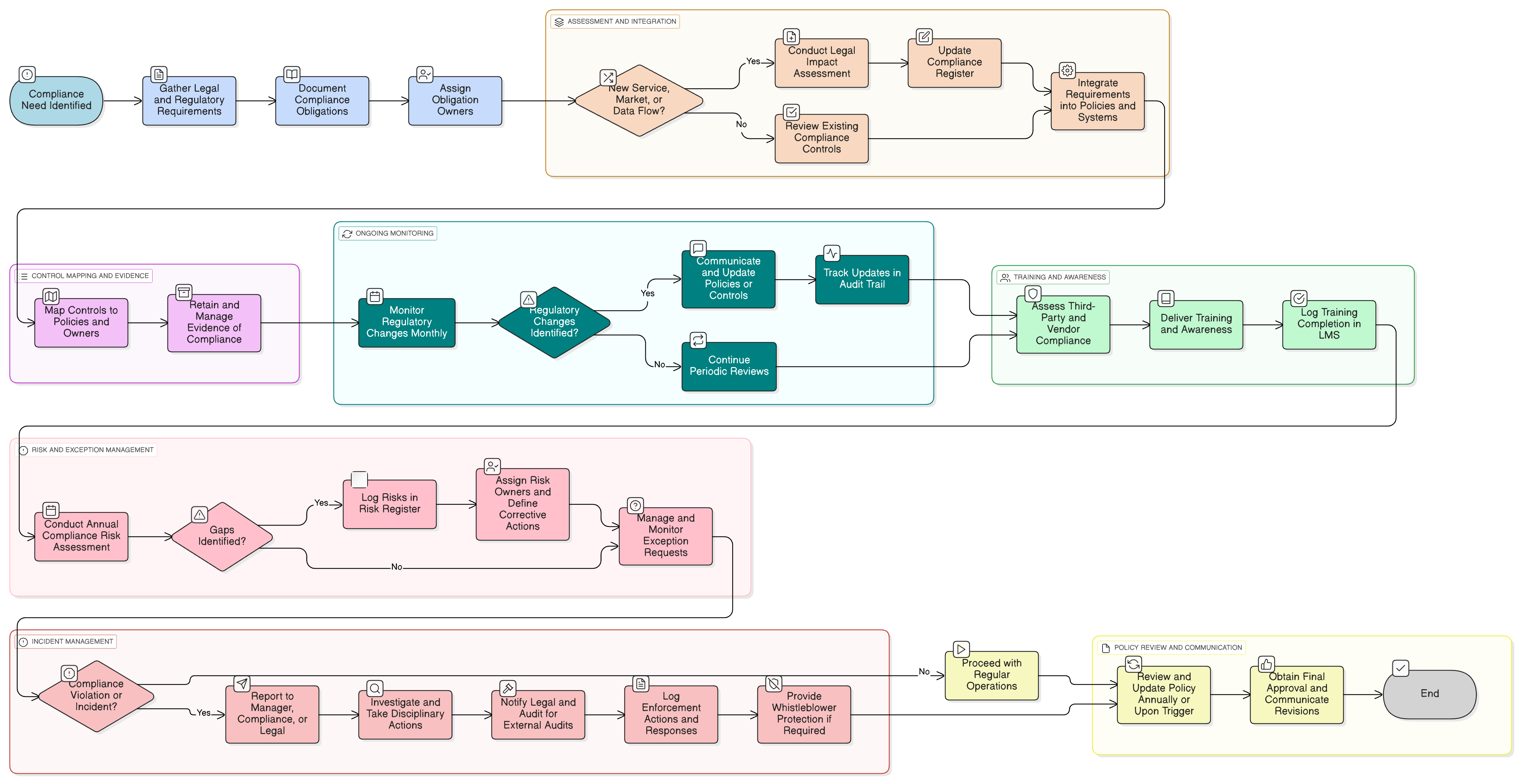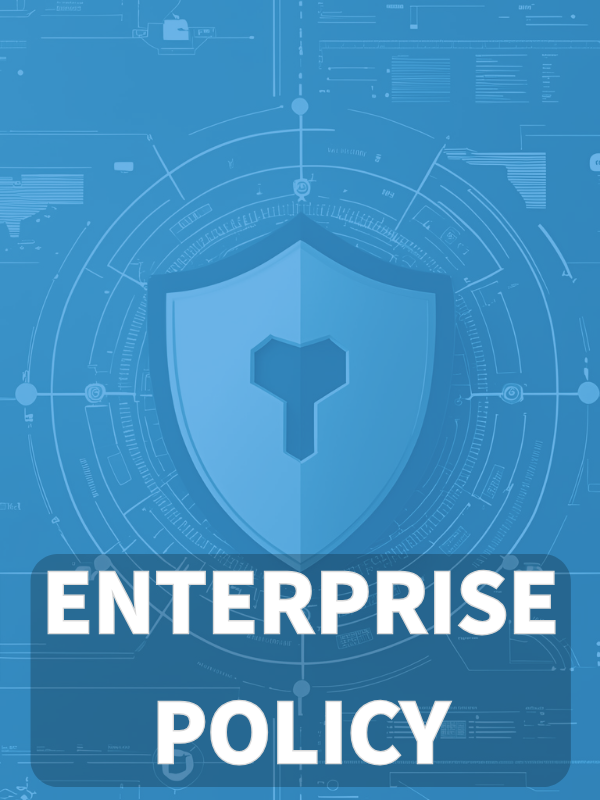Overview
This policy establishes a mandatory framework for managing and meeting the organization’s legal, regulatory, and contractual obligations relevant to information security, privacy, and business operations, ensuring compliance across all functions, processes, and third-party engagements.
Comprehensive Coverage
Addresses legal, regulatory, and contractual obligations across all organizational units and functions.
Embedded Compliance by Design
Integrates legal and regulatory requirements into every phase of system, project, and policy development.
Proactive Risk Management
Identifies, documents, and mitigates compliance risks with structured monitoring and annual assessments.
Clear Roles & Accountability
Defines responsibilities for executive management, Compliance, Legal, Internal Audit, and all employees.
Read Full Overview
Policy Diagram

Click diagram to view full size
What's Inside
Compliance Obligations Register requirements
Embedded Compliance by Design
Contractual and Third-Party Oversight
Annual Compliance Risk Assessment
Regulatory Change Management Procedures
Enforcement and Whistleblower Protections
Framework Compliance
🛡️ Supported Standards & Frameworks
This product is aligned with the following compliance frameworks, with detailed clause and control mappings.
Related Policies
Governance Roles And Responsibilities Policy
Defines decision-making authorities, including legal and compliance roles responsible for regulatory oversight and accountability.
Audit Compliance Monitoring Policy
Provides structured assurance activities—including control testing and evidence gathering—required for internal and external compliance verification.
Information Security Policy
Establishes the baseline governance principles that ensure all information security policies—including compliance—are aligned with strategic business and regulatory requirements.
Risk Management Policy
Supports the evaluation, ownership, and mitigation of legal and regulatory compliance risks across the enterprise.
Information Security Awareness And Training Policy
Ensures all personnel are informed of compliance responsibilities and receive role-appropriate training.
Asset Management Policy
Reinforces legal obligations for managing and protecting regulated or contractual assets, including those involving personal data and critical infrastructure.
Incident Response Policy
Governs mandatory legal notifications (e.g., GDPR Article 33) and escalation procedures in the event of a compliance breach or regulatory event.
About Clarysec Policies - Legal and Regulatory Compliance Policy
Effective security governance requires more than just words; it demands clarity, accountability, and a structure that scales with your organization. Generic templates often fail, creating ambiguity with long paragraphs and undefined roles. This policy is engineered to be the operational backbone of your security program. We assign responsibilities to the specific roles found in a modern enterprise, including the CISO, IT Security, and relevant committees, ensuring clear accountability. Every requirement is a uniquely numbered clause (e.g., 5.1.1, 5.1.2). This atomic structure makes the policy easy to implement, audit against specific controls, and safely customize without affecting document integrity, transforming it from a static document into a dynamic, actionable framework.
Centralized Compliance Tracking
Maintains a quarterly-updated register to monitor, assign, and audit all legal and regulatory obligations at the enterprise level.
Robust Contract & Vendor Oversight
Validates third-party contracts for privacy, breach notification, and termination clauses, ensuring vendor compliance throughout engagement.
Continuous Regulatory Change Management
Enables monthly review and proactive updates of policies and controls in response to new laws or enforcement trends.
Frequently Asked Questions
Built for Leaders, By Leaders
This policy was authored by a security leader with 25+ years of experience deploying and auditing ISMS frameworks for global enterprises. It's designed not just to be a document, but a defensible framework that stands up to auditor scrutiny.
